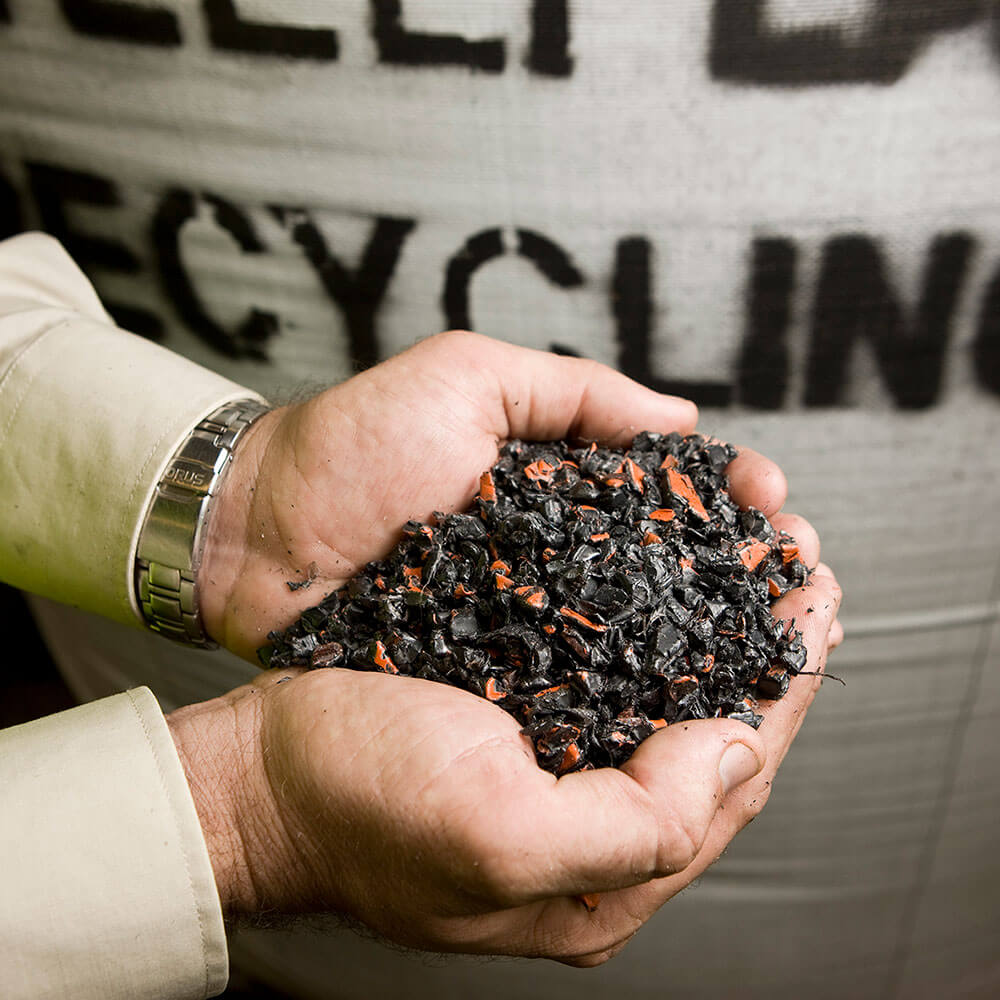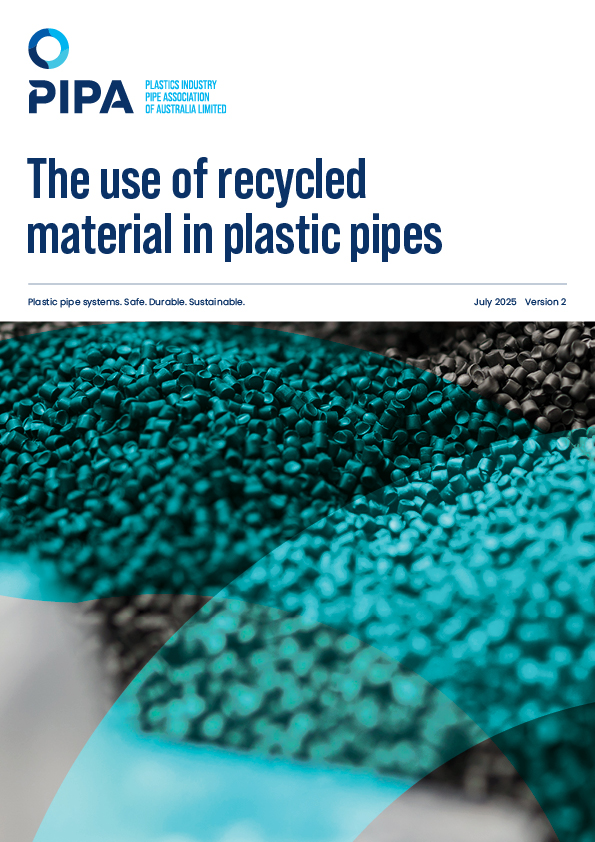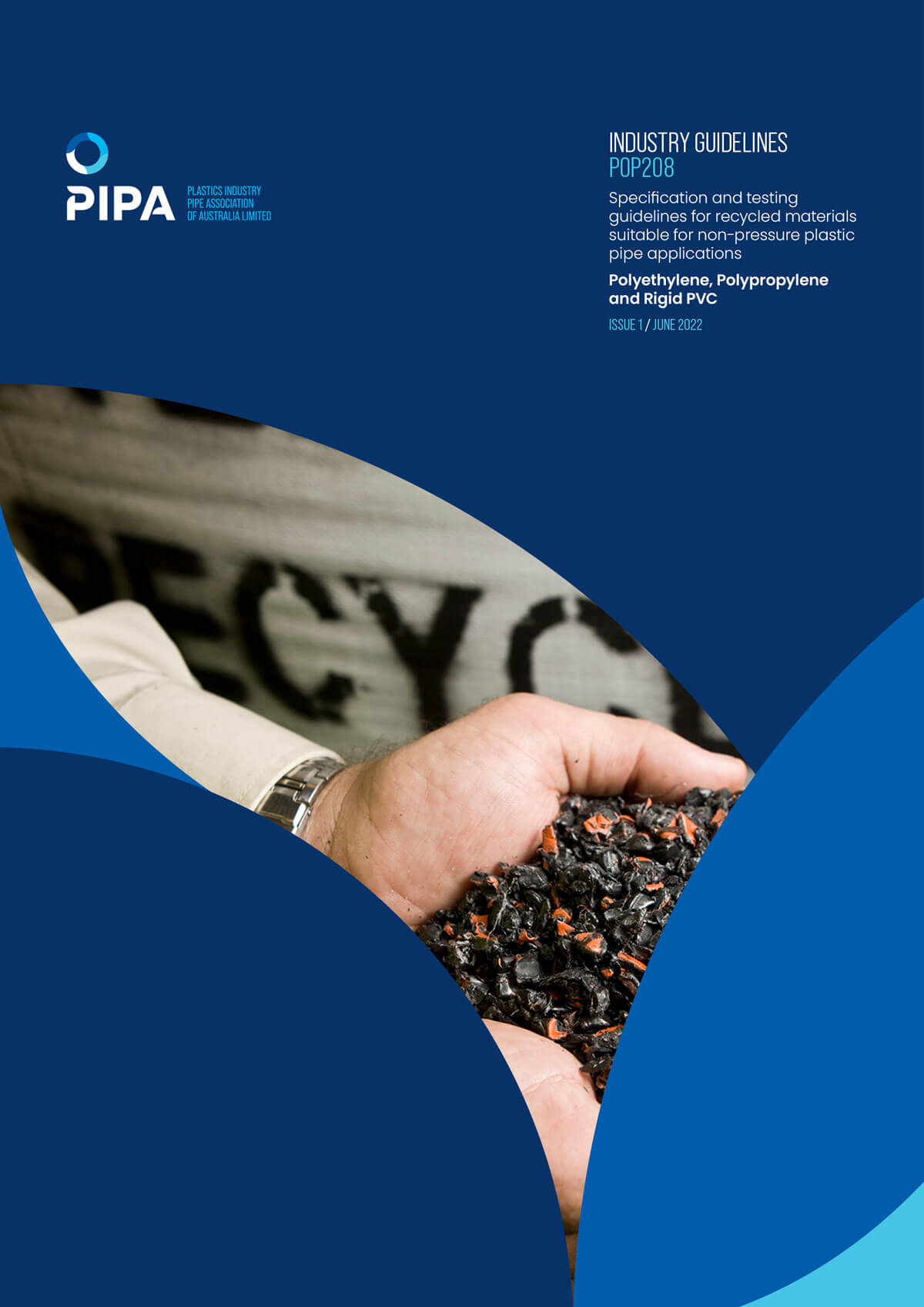Australia’s plastic pipeline infrastructure is vital for delivering essential services—drinking water, gas, electricity, telecommunications, irrigation, and safe sewage and stormwater management. Plastic pipes are engineered to meet strict Australian Standards, ensuring reliable performance for 100 years or more.
As the infrastructure and construction sectors increase their focus on sustainability, there is increasing focus on using recycled content in plastic pipes. To make informed decisions, it’s important to understand:
Discussion Paper: The Use of Recycled Material in Plastic Pipes explores these topics in detail, while Industry Technical Guideline POP208 provides specifications and testing for recycled content in non-pressure pipes, supporting future standards development.

Plastic pipes aren’t single-use plastics—they’re long-lasting infrastructure, designed to deliver essential services for over 100 years. That’s circularity in action.
Recycled content is supported in pipes and must meet strict standards to ensure reliable performance in critical systems.
Circularity is more than recycling—it’s about designing durable, long-life products that minimise waste from the start.

This paper examines the use of recycled materials in plastic pipes, emphasising the industry’s focus on sustainability, safety, and performance.
Plastic pipes are engineered for long service lives—often exceeding 100 years—distinguishing them from single-use plastics. Made from stable polymers, they are designed for durability, recyclability, and circular economy benefits.
Most pipes remain in their first lifecycle, so recycled material availability is limited. Nonetheless, the industry actively recovers suitable materials through take-back programs and scrap reuse to reduce landfill.
Importantly, the paper discusses how recycling targets can overlook the long life and performance of plastic pipes. It warns that applying short-term recycling metrics to long-life products may lead to unintended consequences, including the use of unsuitable materials that could compromise safety and performance.
Instead, the paper promotes a broader view of circularity—valuing longevity, reuse, and resource efficiency over simplistic recycling quotas. It reinforces that Australian and international standards support the use of recycled materials in non-pressure pipes, while ensuring pressure pipes use controlled, traceable rework to maintain quality.
Ultimately, this paper shows how the plastic pipe industry is contributing to the circular economy by keeping materials in use for longer, minimising waste, and delivering sustainable infrastructure solutions.

Technical Guideline POP208 outlines the specification and testing requirements for incorporating recycled polyethylene (PE), polypropylene (PP), and rigid PVC into non-pressure plastic pipe and fitting applications.
Given the critical role plastic pipes play in delivering essential services, it’s vital that materials—whether virgin or recycled—meet strict performance criteria. This includes having the necessary physical, chemical, and rheological properties to ensure long-term durability.
POP208 builds on Australian Standards and international research, offering guidance on how recycled materials can be safely and effectively used in non-pressure applications, supporting the development of future Standards in Australia.
PIPA, in collaboration with industry partners and recyclers, has established the Plastic Pipes Recycling Program. By working with PIPA members and established recyclers, the program connects end users with drop-off locations for off-cuts and end of life pipes—diverting valuable resources from landfill and supporting Australia’s circular economy.

Plastic pipes are engineered for strength, durability, and longevity, designed to provide critical services reliably for 100 years or more.
Their design supports repair and maintenance, enabling pipes to be fixed rather than replaced, which extends their service life and reduces waste. Additionally, many plastic pipes can be reused in place as host pipes in relining applications, giving them a second life without the need for removal.
Only after repair and reuse options have been exhausted are plastic pipes recycled, with off-cuts generated during the installation process can be recovered and reprocessed. This transforms end-of-life materials into new pipe products and closes the loop. This multi-stage approach—from repair to reuse to recycling—embodies a true circular economy, maximising resource efficiency across multiple generations.
Explore more about how plastic pipes play a vital role in advancing the circular economy and supporting sustainable infrastructure.